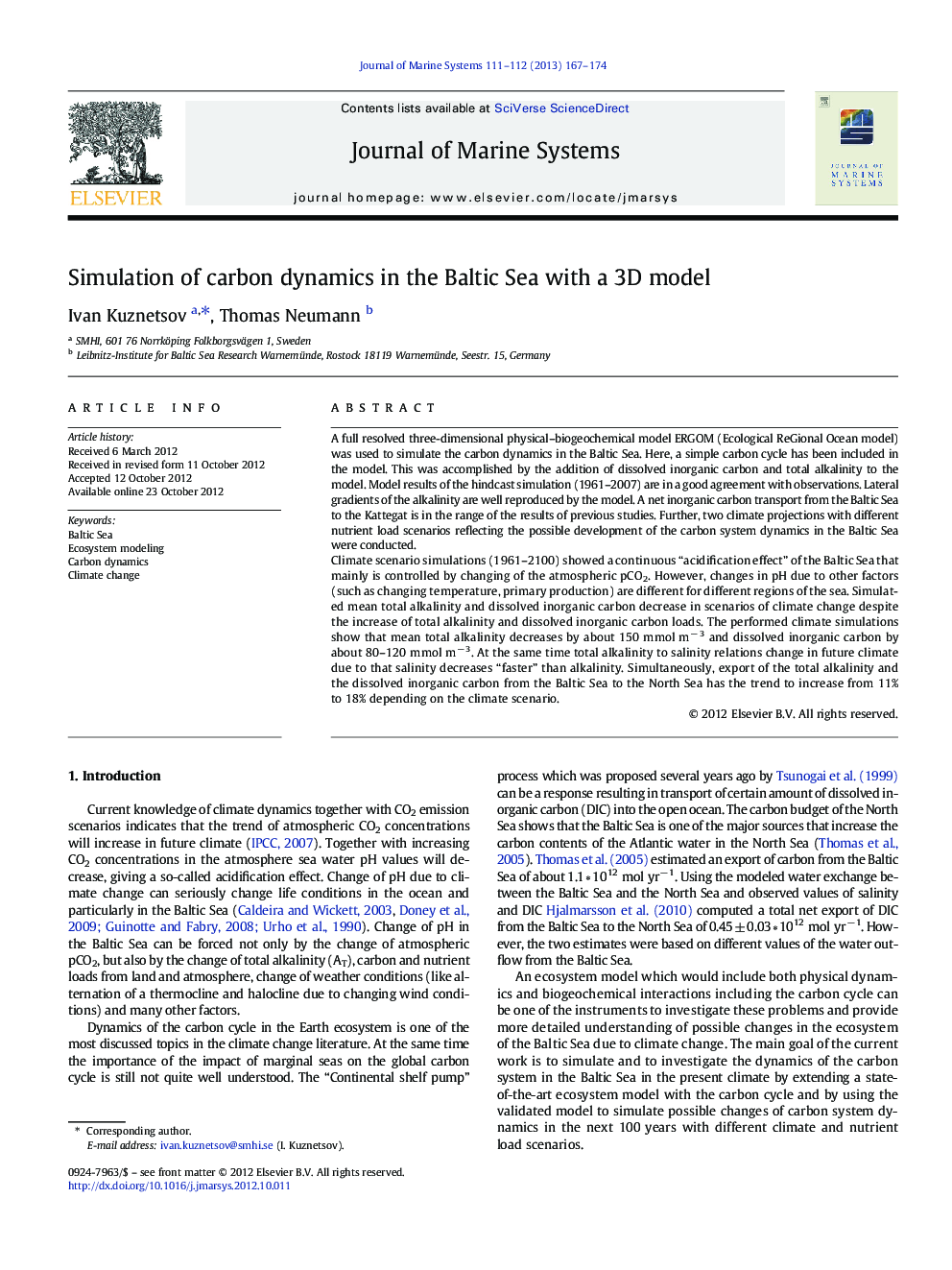| کد مقاله | کد نشریه | سال انتشار | مقاله انگلیسی | نسخه تمام متن |
|---|---|---|---|---|
| 4548179 | 1627311 | 2013 | 8 صفحه PDF | دانلود رایگان |

A full resolved three-dimensional physical–biogeochemical model ERGOM (Ecological ReGional Ocean model) was used to simulate the carbon dynamics in the Baltic Sea. Here, a simple carbon cycle has been included in the model. This was accomplished by the addition of dissolved inorganic carbon and total alkalinity to the model. Model results of the hindcast simulation (1961–2007) are in a good agreement with observations. Lateral gradients of the alkalinity are well reproduced by the model. A net inorganic carbon transport from the Baltic Sea to the Kattegat is in the range of the results of previous studies. Further, two climate projections with different nutrient load scenarios reflecting the possible development of the carbon system dynamics in the Baltic Sea were conducted.Climate scenario simulations (1961–2100) showed a continuous “acidification effect” of the Baltic Sea that mainly is controlled by changing of the atmospheric pCO2. However, changes in pH due to other factors (such as changing temperature, primary production) are different for different regions of the sea. Simulated mean total alkalinity and dissolved inorganic carbon decrease in scenarios of climate change despite the increase of total alkalinity and dissolved inorganic carbon loads. The performed climate simulations show that mean total alkalinity decreases by about 150 mmol m− 3 and dissolved inorganic carbon by about 80–120 mmol m− 3. At the same time total alkalinity to salinity relations change in future climate due to that salinity decreases “faster” than alkalinity. Simultaneously, export of the total alkalinity and the dissolved inorganic carbon from the Baltic Sea to the North Sea has the trend to increase from 11% to 18% depending on the climate scenario.
► We simulate the carbon dynamics in the Baltic Sea with three-dimensional ecosystem model.
► Two climate projections with 3 load scenarios were used to examine changes in carbon dynamics.
► Climate scenario simulations showed decrease mean AT and DIC.
► Export of the AT and DIC from the Baltic Sea to the North Sea has the trend to increase.
Journal: Journal of Marine Systems - Volumes 111–112, February 2013, Pages 167–174